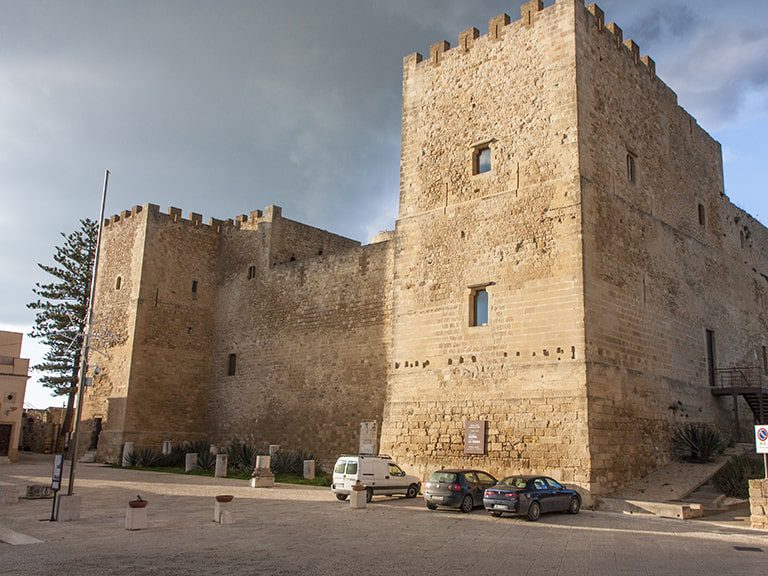In the history of Sicily this is the part concerning the Swabian domination of the island.
This domination is among those that we can consider among the most important for Sicily, let’s try to understand the reasons together.
First of all let’s talk about the story.
The Swabians were a German family, at that time, very influential all over the world.
The story between the Swabians and Sicily begins in 1194 when, with the death of William III, the Norman domination of the island ended.
After William’s death, Costanza d’Altavilla became ruler of the island, daughter of Roger II and aunt of William, who was married to Henry VI, son of Frederick Barbarossa, King of Germany.
Frederick II of Swabia, the future emperor of Sicily, was born from this marriage.
When Henry VI died, Constance reigned on the island for some time until he crowned his son Frederick at the tender age of 4, it was 1198.
In fact, being still too young, Sicily was directed first by Constance and, after her death, by Pope Innocent III who actually entrusted the regency of the island first to Marcovaldo and then to Guglielmo di Capparone.
When Frederick II was 14 he officially became Emperor in Sicily.
After Frederick’s death there was much commotion about who should inherit the throne.

Frederick had indicated his second son Corrado IV as his heir both for what concerned Sicily and Jerusalem. He left to the firstborn, Manfredi, Taranto and other minor fiefs.
In reality, Corrado suddenly died of malaria before actually taking possession of the island, which he bequeathed to his son Corradino.
The biggest tensions at that time were with the papal kingdom.
At that moment, Manfredi’s work was fundamental, first he managed to find an agreement with the pope and then organized an army that defeated the papal one.
False rumors spread about the alleged death of Corradino and in 1258 Manfredi was crowned in the Cathedral of Palermo.
In 1263 Manfredi was excommunicated and the pope (Urban IV) gave the kingdom to the king of France Louis IX.
The French King made war on Manfredi defeating him in 1266.
Corradino tried the reconquest in vain in 1268.
In 1281 the daughter of Manfredi, Constance II of Sicily, claimed the kingdom and after the Sicilian Vespers she became queen of the island together with her husband Peter III of Aragon.
Constance remained even after her husband’s death alongside the children who took their father’s place in command of the island.
In 1291 Constance left Sicily and with her also the Swabians.

Frederick II
Frederick II was certainly the leading figure during this era of history of the Sicilian island.
During his reign Palermo became the center of a vast empire.
The Sicilian Poetic School, that is a literary movement that produced a poem considered to be the first lyric in common Italian, dates back to that period.
This type of poetry drew inspiration from the lyric of the Provençal troubadours introducing a different and original connotation. It certainly influenced the Dolce Stil Novo.
Among its outstanding elements we remember Giacomo da Lentini known as the Notary (precisely because he was a Notary).
Federico was nicknamed “Stupor Mundi” and remained famous as regent for the enactment of the Melfitane Constitutions: a set of laws that regulated the social and economic life of his subjects.
He had bad relations with the papacy and remained famous for leading the Fourth Crusade.
The first time he left for the crusade he had to return before arriving in the Holy Land because of an illness.
Pope Gregory IX, thinking that Frederick had invented the disease, excommunicated him.
As soon as Frederick II recovered he left for the Crusade.
It must be said that it was a unique historical event of its kind, as the emperor organized the Crusade and still participated in it under excommunication.
Another noteworthy factor was the construction of many castles and fortifications.
Another important feature of the Swabian ruler was his interest in astrology and esotericism.
The curiosity towards these arts was strong in Frederick and it is to underline a strange matter in this perspective: in this period under his reign there is a massive deportation of Muslims present in Sicily on the one hand, on the other it is a certain fact that for questions of metaphysics Federico turned to the circle of Muslim esotericists present in his court.
I don’t know what the reason for these opposing choices was but it seems really strange to me.
Federico died in 1250 and was buried, as he had chosen, in the cathedral of Palermo.




